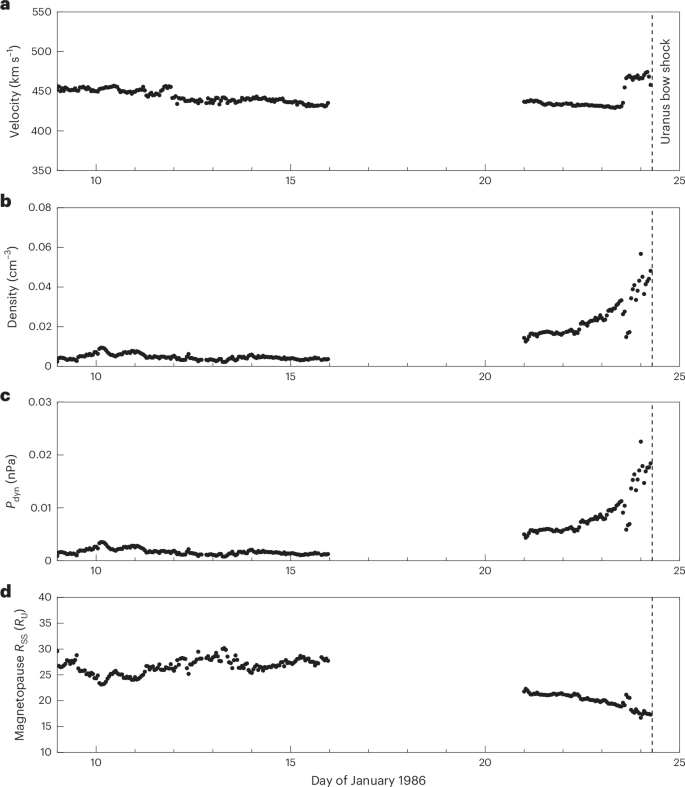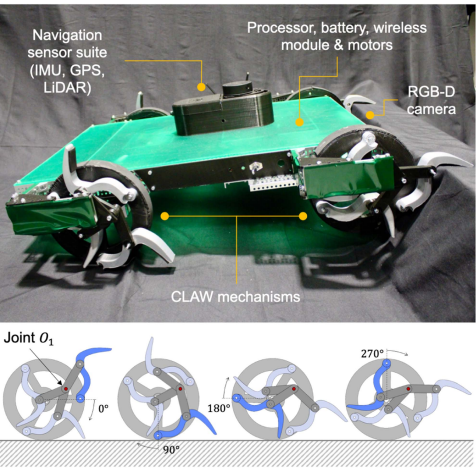2024-11-11 NASA
<関連情報>
- https://www.nasa.gov/missions/voyager-program/voyager-2/mining-old-data-from-nasas-voyager-2-solves-several-uranus-mysteries/
- https://www.nature.com/articles/s41550-024-02389-3
ボイジャー2号がフライバイした際の天王星磁気圏の異常状態 The anomalous state of Uranus’s magnetosphere during the Voyager 2 flyby
Jamie M. Jasinski,Corey J. Cochrane,Xianzhe Jia,William R. Dunn,Elias Roussos,Tom A. Nordheim,Leonardo H. Regoli,Nick Achilleos,Norbert Krupp & Neil Murphy
Nature Astronomy Published:11 November 2024
DOI:https://doi.org/10.1038/s41550-024-02389-3

Abstract
The Voyager 2 flyby of Uranus in 1986 revealed an unusually oblique and off-centred magnetic field. This single in situ measurement has been the basis of our interpretation of Uranus’s magnetosphere as the canonical extreme magnetosphere of the solar system; with inexplicably intense electron radiation belts and a severely plasma-depleted magnetosphere. However, the role of external forcing by the solar wind has rarely been considered in explaining these observations. Here we revisit the Voyager 2 dataset to show that Voyager 2 observed Uranus’s magnetosphere in an anomalous, compressed state that we estimate to be present less than 5% of the time. If the spacecraft had arrived only a few days earlier, the upstream solar wind dynamic pressure would have been ~20 times lower, resulting in a dramatically different magnetospheric configuration. We postulate that such a compression of the magnetosphere could increase energetic electron fluxes within the radiation belts and empty the magnetosphere of its plasma temporarily. Therefore, the interpretation of Uranus’s magnetosphere as being extreme may simply be a product of a flyby that occurred under extreme upstream solar wind conditions.



